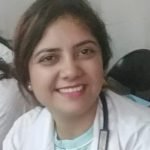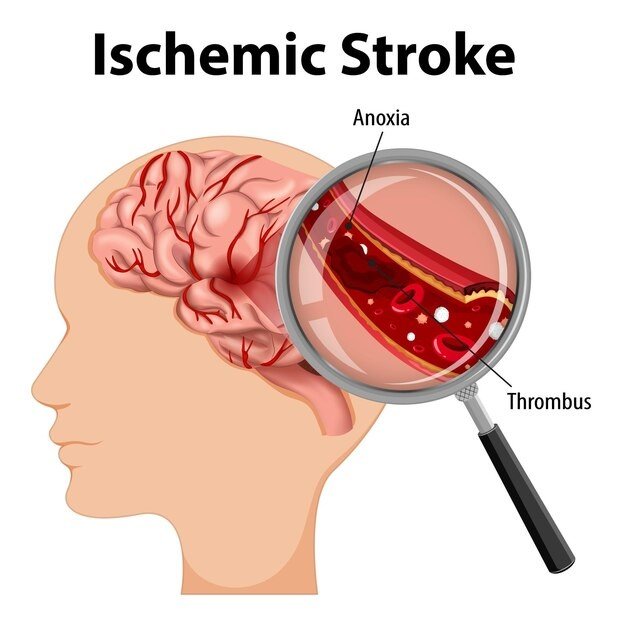Introduction
World Stroke Day, observed on October 29th each year, is a global event dedicated to raising awareness about stroke and its impact on individuals, families, and communities. Stroke is a medical emergency that affects millions of lives worldwide. It’s a day for education, prevention, and support for those who have experienced strokes. In this blog, we will explore the significance of World Stroke Day, the impact of stroke on individuals and society, and the steps we can take to reduce the risk of strokes.
Understanding Stroke
A stroke, often referred to as a “brain attack,” is a medical condition that occurs when there is a disruption in the blood supply to the brain. This disruption can lead to damage in the brain tissue due to the lack of oxygen and nutrients, potentially causing various physical, cognitive, and emotional impairments. Strokes are a medical emergency, and prompt treatment is essential to minimize brain damage and improve the chances of recovery.
There are two primary types of strokes:
- Ischemic Stroke: This is the most common type of stroke, accounting for approximately 87% of all stroke cases. It occurs when a blood clot or other material blocks a blood vessel that supplies blood to the brain. These clots often originate from fatty deposits in the blood vessels and can also develop in other parts of the body before traveling to the brain.
- Thrombotic Stroke: This occurs when a blood clot (thrombus) forms in one of the arteries that supply blood to the brain. These clots typically develop in areas where there is atherosclerosis (the build-up of fatty deposits on artery walls).
- Embolic Stroke: This happens when a blood clot or other debris forms elsewhere in the body, like the heart, and is carried through the bloodstream until it reaches a blood vessel in the brain that is too narrow to pass through.
- Haemorrhagic Stroke: Haemorrhagic strokes occur when there is bleeding in the brain, often caused by a ruptured blood vessel. Haemorrhagic strokes are less common but tend to be more severe than ischemic strokes. There are two primary types of haemorrhagic strokes:
- Intracerebral Haemorrhage: This type of haemorrhagic stroke occurs when a blood vessel within the brain ruptures and leaks blood into the surrounding brain tissue.
- Subarachnoid Haemorrhage: Subarachnoid haemorrhages occur when there is bleeding into the space between the brain and the thin tissues covering the brain, known as the subarachnoid space. This type of stroke is typically caused by a ruptured aneurysm (a weakened area in a blood vessel).
Stroke can lead to various physical, cognitive, and emotional challenges. It can affect a person’s ability to move, speak, and think, often requiring extensive rehabilitation and support.
Causes of Stroke:
- Ischemic Stroke Causes:
- Thrombosis: A thrombotic stroke occurs when a blood clot (thrombus) forms within one of the arteries that supply blood to the brain. The clot often develops in areas where there is atherosclerosis (the build-up of fatty deposits or plaques on the artery walls). The clot can partially or completely block blood flow to the brain.
- Embolism: An embolic stroke happens when a blood clot or other debris forms elsewhere in the body (usually the heart or a large artery) and is carried through the bloodstream until it reaches a smaller artery in the brain. If the clot is too large to pass through the smaller artery, it can block blood flow to a portion of the brain.
- Small Vessel Disease: Small vessel disease is characterized by the narrowing or blockage of small blood vessels in the brain. This condition is often associated with high blood pressure and can lead to lacunar infarcts, a type of ischemic stroke.
- Cardio embolic Stroke: Cardio embolic strokes result from clots or debris that originate in the heart. These clots can form in individuals with conditions such as atrial fibrillation, heart valve disease, or heart infections.
2. Haemorrhagic Stroke Causes:
- Cerebral Aneurysm: A cerebral aneurysm is a weakened area in the wall of an artery in the brain. When the aneurysm ruptures, it causes bleeding into the brain, resulting in a haemorrhagic stroke.
- Arteriovenous Malformation (AVM): AVM is an abnormal tangle of blood vessels in the brain. These vessels are more likely to rupture and cause a haemorrhagic stroke.
- Hypertension (High Blood Pressure): Uncontrolled high blood pressure can lead to weakening and eventual rupture of blood vessels in the brain, resulting in a haemorrhagic stroke.
- Cerebral Amyloid Angiopathy (CAA): CAA is a condition in which protein deposits in the blood vessels of the brain can weaken the vessel walls, making them prone to bleeding.
- Head Trauma: Severe head injuries can damage blood vessels in the brain, leading to haemorrhagic strokes.
- Certain Medications: Some medications, like blood thinners, can increase the risk of bleeding and may contribute to haemorrhagic strokes if not properly managed.
- Illicit Drug Use: The use of illicit drugs like cocaine and amphetamines can lead to a sudden and severe increase in blood pressure, which can trigger a haemorrhagic stroke.
Signs and Symptoms of Stroke:
Recognizing the signs and symptoms of a stroke is crucial because prompt medical attention can significantly improve a person’s chances of recovery. Strokes can vary in severity and presentation, but there are common signs to look for. Use the FAST acronym to remember them:
- F – Face Drooping: Ask the person to smile. Does one side of their face droop or appear uneven?
- A – Arm Weakness: Ask the person to raise both arms. Does one arm drift downward or seem weaker than the other?
- S – Speech Difficulty: Ask the person to repeat a simple sentence. Is their speech slurred or difficult to understand? Can they speak at all?
- T – Time to Call: If you observe any of these signs, it’s crucial to call emergency services immediately.
In addition to the FAST acronym, other common signs and symptoms of a stroke may include:
- Sudden Numbness or Weakness: This often affects the face, arm, or leg, especially on one side of the body.
- Sudden Confusion: The person may become disoriented, have trouble understanding speech, or be unable to speak coherently.
- Sudden Trouble Seeing: Vision problems can occur in one or both eyes. The person may experience blurred or blackened vision.
- Sudden Trouble Walking: Lack of coordination or balance issues may make it difficult for the person to walk or stand.
- Severe Headache: A sudden, severe headache with no known cause can be a sign of a haemorrhagic stroke.Top of Form
The Global Impact of Stroke
Stroke is a major global health issue, affecting people of all ages and backgrounds. Here are some key facts about the global impact of stroke:
- Stroke is the second leading cause of death worldwide.
- It is a leading cause of disability, with survivors often requiring long-term care and rehabilitation.
- Many risk factors for stroke, such as high blood pressure, smoking, diabetes, and obesity, are preventable.
- Timely intervention is critical for stroke survival and recovery. The mantra “Time is Brain” highlights the importance of swift action.
Raising Awareness and Taking Action
World Stroke Day serves as a reminder that awareness and early intervention are key to reducing the devastating impact of strokes. Here are some ways individuals, communities, and healthcare providers can make a difference:
- Know the Signs: Understanding the signs of stroke is crucial. Remember the FAST acronym—Face, Arms, Speech, Time.
- Prevention: Promote a healthy lifestyle that includes regular exercise, a balanced diet, and managing risk factors like high blood pressure and diabetes.
- Support and Rehabilitation: Recognize the importance of post-stroke rehabilitation. Stroke survivors need physical and emotional support to regain their independence and quality of life.
- Advocacy and Education: Support stroke research and advocacy efforts. Raise awareness about stroke risk factors, prevention, and the importance of early treatment.
- Global Solidarity: Join the global community in advocating for better stroke care, research, and support. Share your stories and experiences to inspire change.
Homeopathic Medicines for Brain Strength:
- Ginkgo Biloba: Ginkgo Biloba is a natural remedy often used to improve memory and cognitive function. It may help improve blood flow to the brain and reduce the risk of stroke.
- Baryta Carbonica: Baryta Carbonica is considered for cognitive decline in the elderly and may be recommended as a preventive measure.
- Conium Maculatum: Conium Maculatum is considered for cognitive decline, especially when there is a sense of weakness and trembling.
- Calcarea Phosphorica: This remedy is used for individuals who are experiencing mental fatigue, confusion, and lack of concentration.
- Aurum Metallicum: Aurum Metallicum may be considered for individuals with a history of depression and emotional stress that can contribute to cognitive problems.
Conclusion
World Stroke Day is a day of unity, education, and action. It reminds us that strokes are preventable, treatable, and manageable. By increasing awareness, supporting survivors, and advocating for improved stroke care, we can reduce the burden of strokes on individuals and society. Together, we can make a positive impact on the lives of those affected by this significant health challenge. Let’s stand together and work towards a world free from the devastating impact of strokes. It’s a day to unite as a global community, spreading knowledge, and empowering individuals and families to take action against this life-altering medical condition.
In our journey to combat strokes, medical advancements play a vital role. One such advancement is Omeo Brainology Syrup, a product by B Jain Pharmaceuticals. Omeo Brainology Syrup is designed to support brain health, aiding in cognitive function and memory. While it is not a replacement for medical treatment or stroke prevention measures, it can be a valuable addition to a holistic approach to brain health.

Dr Simranjit Kaur
Dr Simranjit Kaur is a highly accomplished medical professional with a BHMS degree from BVDU Pune and additional qualifications including CGO and MBA(Hospital Administration). With a passion for paediatric care, Dr. Simranjit pursed a fellowship in paediatrics, honing expertise in the specialized field. Currently Research Officer at BJain Pharmaceuticals.





